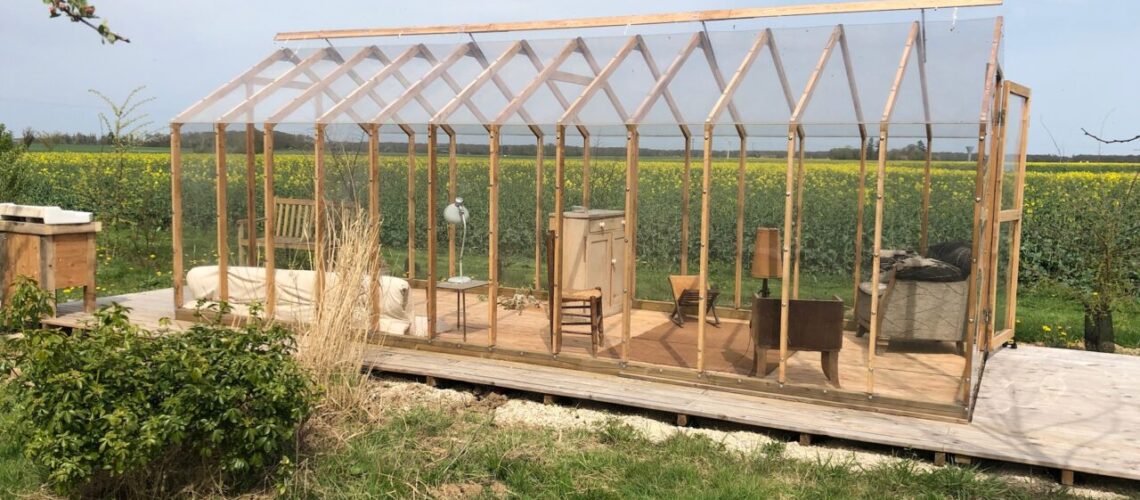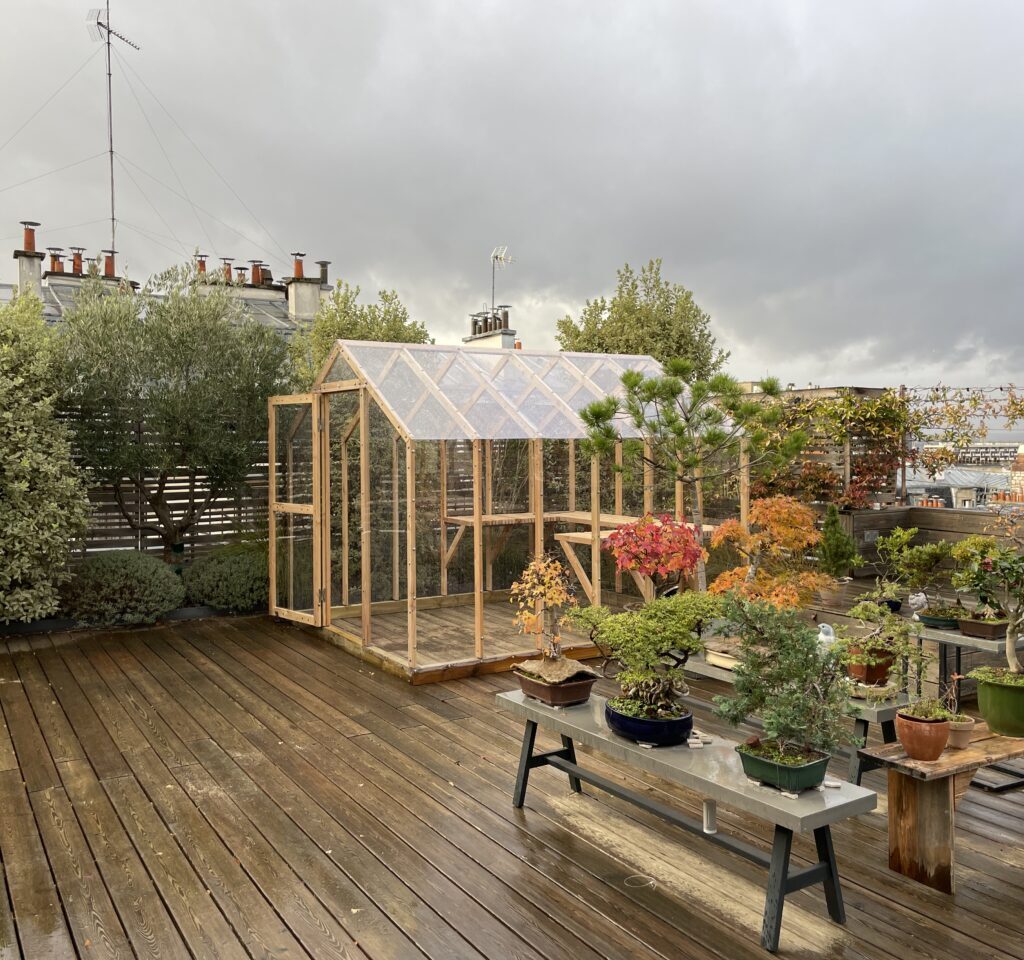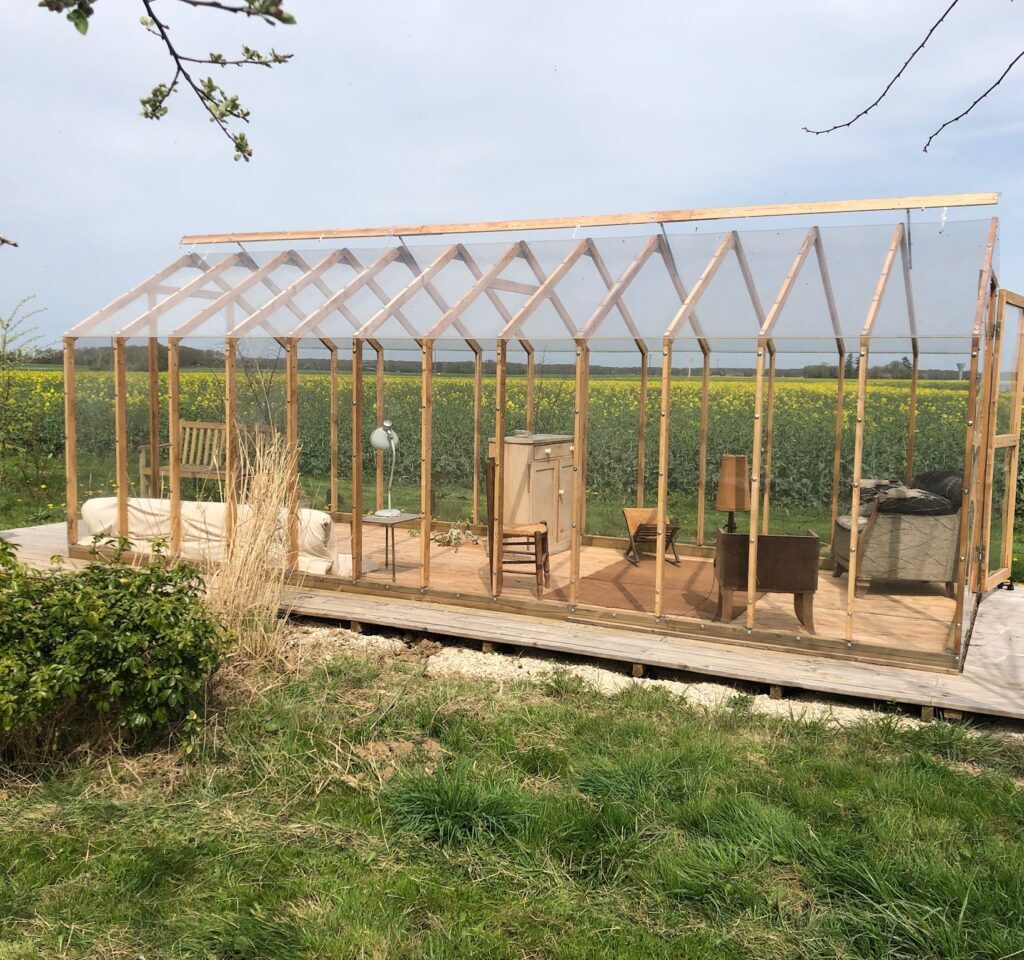Why choose a wooden greenhouse rather than an aluminium one?

Why Choose a Greenhouse Made of Wood and Polycarbonate? A Durable, Aesthetic, and Eco-Friendly Alternative to Aluminum and Glass Greenhouses
Why is the Choice of Material Crucial for a Garden Greenhouse?
When considering the purchase of a garden greenhouse, the choice of materials is a determining factor that will influence not only the durability but also the aesthetics and performance of your greenhouse.
The most common options are wooden and polycarbonate greenhouses on the one hand, and aluminum and glass greenhouses on the other.
But what are the advantages of each material? Why is choosing a wood and polycarbonate greenhouse the best compromise between aesthetics, ecology, and longevity? This article will shed light on these crucial points.
Aesthetic Integration: Wood and Polycarbonate, A Natural and Light Pairing

One of the main advantages of a wooden greenhouse is its natural integration into the landscape. Wood is a noble material that easily blends into outdoor environments, particularly in natural or heritage gardens. Unlike an aluminum greenhouse, often perceived as cold and industrial, a wooden greenhouse brings warmth and authenticity to your space.
Over time, the wood used in Helio garden greenhouses (larch or Douglas fir) naturally patinas and takes on a silvery hue. This aging process further enhances its visual integration, making it discreet and elegant in any type of garden, whether modern or classic.
Meanwhile, the compact polycarbonate gives the transparent greenhouse a visual lightness. Unlike glass, which is complex to install and prone to quick degradation (rusted staples, peeling joints, cracks), polycarbonate offers a simpler, easier-to-maintain solution.
The wood-polycarbonate combination allows for an elegant and discreet garden greenhouse that enhances the outdoor space without the drawbacks of glass and rust-prone metal.
Durable and Resistant: Wood and Polycarbonate, A High-Performance Duo
The larch or Douglas fir wood used in Hélio greenhouses is naturally rated as Class 3, meaning it resists prolonged contact with moisture. This quality allows the wood to be used without additional chemical treatments while ensuring durability and weather resistance.
The wood-polycarbonate structure should be viewed as a whole. Wood provides robustness, while polycarbonate acts as a structural and bracing element. Together, these materials complement each other to offer the greenhouse unparalleled structural strength, capable of withstanding strong winds and heavy snow loads.
The compact polycarbonate also withstands shocks and severe weather. It is 200 times more impact-resistant than glass, making it ideal for professional greenhouses or large garden greenhouses.
The combination of wood and polycarbonate gives our greenhouses remarkable sturdiness while preserving the elegant finesse reminiscent of traditional wrought iron greenhouses.


Environmental Impact: A Sustainable and Eco-Responsible Greenhouse
Choosing a wood and polycarbonate greenhouse is also an eco-friendly choice.
Wood, as a renewable material, plays an active role in CO2 sequestration. And contrary to popular belief, the use of polycarbonate in Helio wood greenhouses also minimizes the overall carbon footprint.
Firstly, the polycarbonate used is made from 30% recycled materials and is 100% recyclable. Secondly, for a greenhouse of equivalent surface area, the production of polycarbonate glazing emits 4x less CO2 than glass glazing. (See comparative table)
(see comparison table)
Tableau comparatif : Bilan carbone serre bois et serre aluminium
| Exemple pour une serre de 10m2 | Serre traditionnelle Aluminium et verre renforcé 4mm | Serre en bois Helio Bois et Polycarbonate compact 2mm |
|---|---|---|
| Structure : Matière première | Masse alu : env 70 kg | Masse bois : env 120 kg* *à noter qu'au cours de son cycle de vie, le bois séquestre du C02 |
| Vitrage : Matière première | Masse verre (4mm) : env 350 kg Facteur d'émission (si fabriqué en Europe) : 4,56 kgC02e / kg(1) - soit 1600 kgC02e Taux recyclé : 10% Provenance globale : Chine et Europe de l'Est | Masse polycarbonate (2mm) : env 80kg Facteur d'émission (si fabriqué en Europe) : 4,5 kgC02e / kg(2) - soit 360 kgC02e Taux recyclé : 30% Provenance globale : Irlande du Nord (90%), Italie, Espagne (10%) |
| Transport produit fini (pour 500 km parcourus) | Masse du colis : 445 kg Transport spécifique pour le verre, équivalent porteur 19 tonnes PTAC - avec retour à vide : 332 g C02 / t.km(3) - soit 148 kg C02 | Masse de la palette : 280 kg Ensemble articulé 40 tonnes PTRA - Messagerie : 175 g CO2 / t.km(4) - soit 24,5 kg C02 |
Sources:
(1) Base IMPACT – PRG AR4
(2) europeanclimate.org
(3) bilans-ges.ademe.fr : “ Documentation of emission factors in the Base Carbone ®’.
(4) bilans-ges.ademe.fr : “ Documentation of emission factors in the Base Carbone ®’.
Cost comparison: wooden greenhouse, a sustainable investment
While the initial investment in a wood and polycarbonate greenhouse may seem higher than that of an aluminum and glass greenhouse, it is actually a long-term investment.
Wood and polycarbonate require little maintenance over time and offer increased resistance to weather conditions, reducing maintenance costs.
It’s also important to note that wood is a noble material available in limited quantities, and it is more challenging to work with than aluminum, which is mass-produced in various forms in factories often located in Asia.
Choosing wood as a material aligns with an artisanal and local approach, in tune with environmental and sustainability values.

Conclusion: A Wood and Polycarbonate Greenhouse, The Best Compromise Between Aesthetics and Performance
In conclusion, opting for a wood and polycarbonate greenhouse offers numerous advantages in terms of durability, aesthetics, and ecology.
Whether you’re looking to create a cultivation space or a true outdoor living area, this combination of natural and high-performance materials guarantees you a long-term investment that is environmentally friendly.
Unlike aluminum and glass greenhouses, which are more industrial and less eco-friendly, Helio greenhouses combine transparency, lightness, and sturdiness while enhancing your outdoor space.


